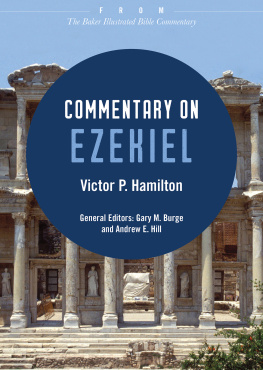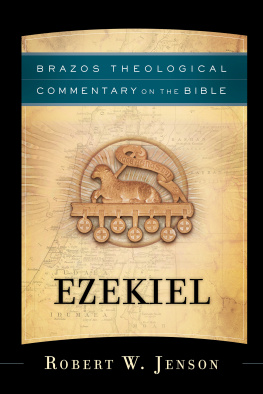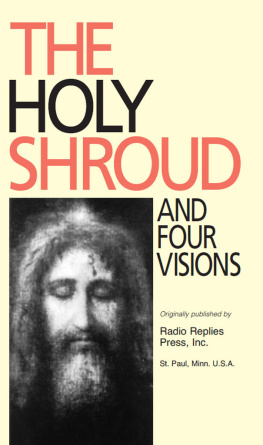King James Version: Ezekiel Chapter 40, Verses 625
Chapter 40, Verse 6
Then came he unto the gate which looketh toward the east, and went up the stairs thereof, and measured the threshold of the gate, which was one reed broad; and the other threshold of the gate, which was one reed broad .
In the pyramid, the gate or entrance that looks toward the east is the entrance to the well shaft at the lower part, or the beginning of the Grand Gallery (see drawing 13). Make a mental note of this because the well entrance at the start of the Grand Gallery will be referred to later as the separate place. The Grand Gallery slopes upward at an angle of 26 degrees, 18 minutes, and 9.7 seconds. There are two ramps, one on each side of the Grand Gallery, and cut into these ramps are holes that appear to be stairs (see Drawing 13). Thus Ezekiel and his guide climbed up the ramps of the Grand Gallery to the great step and entered through the first lower passage into the antechamber. The antechamber is the small room located between the first and second lower passages before the Kings Chamber (refer to drawings 6). There he measured the heights of the antechamber walls, the north and the south ends. According to Ezekiel, they measured one reed, which equals 6 sacred cubits, or 150.159 primitive inches.
If you look at drawing 2, measurement (A), you will see that the actual measurements of the north and south wall of the antechamber are exactly 149.44071 primitive inches (5.978 sacred cubits). The correlation of the measurements is almost exact, with only a 0.71829 primitive inch difference between the two measurements.
Chapter 40, Verse 7
And every little chamber was the reed long, and one reed broad; and between the little chambers were five cubits; and the threshold of the gate by the porch of the gate within was one reed .
Again Ezekiel confirms the heights of the antechamber wall as being one reed, or 150.159 inches, high, as well as defining the chambers on the side of the antechamber, or three little chambers (grooves). There is also a fourth little chamber that contains two granite leaves. If all four chambers, or groove lengths, are added together horizontally they total 103.03295 primitive inches in length, or 5 cubits.
If you refer to drawing 2, measurement (B), you will see the measurement. They measure 103.03295 primitive inches in length, or exactly 5 cubits long.
Chapter 40, Verse 89
He measured also the porch of the gate within, one reed. Then measured he the porch of the gate, eight cubits; and the posts thereof, two cubits; and the porch of the gate was inward .
When Ezekiel refers to a porch, he means the floor going inward. In this case you will note that Ezekiel gives two measurements of the same distance that are in conflict with one another. That is, he records in verse 8 that the floor inward measures 1 reed, and in verse 9 he records the same floor measures 8 cubits. I would speculate that he was measuring the floor length of the first lower passage and the floor length of the antechamber, since the floor was inward from the Grand Gallery. These two floor lengths added together equal 8 cubits, or 165.0272 British inches, according to Ezekiel.
From the pyramid measurements, the combined length of the two floors is 168.28899 primitive inches. Refer to drawing 6, measurement (C). The difference in the correlation of the two measurements is only 3 inches over a distance of 14 feet. The mention of the posts of 2 cubits refers to the combined measurement of both sides of the entrance to the first lower passage where the Grand Gallery ends. Refer to drawing 4, measurement (D), to see the measurements of 20.606 inches, or 1 cubit on each side of the entrance to the first lower passage.
Chapter 40, Verse 10
And the little chambers of the gate eastward were three on this side, and three on that side; they three were of one measure: and the posts had one measure on this side and on that side .
On each side of the antechamber there are exactly three small chambers on the east wall and three identical chambers on the west wall, that is three on this side, and three on that side. Refer to drawing 11, (Note E). All of these chambers have the same measurements. The posts are the small raised section of the chambers, and they are all identical in length. Ezekiel did an excellent job in this description of the antechamber. The descriptions are concise and articulate.
Chapter 40, Verse 11
And he measured the breadth of the entry of the gate, ten cubits: and the length of the gate thirteen cubits .
Ezekiel measured the width of the east wall of the Kings Chamber from where the entry of the second lower passage (gate) into the Kings Chamber begins (see drawing 6, measurement (F)). Ezekiel recorded it measured 10 cubits, or 206.06593 primitive inches.
If you look at the drawing, you will note that the east wall of the Kings Chamber is exactly 206.06593 primitive inches in width, or 10 cubits.
The 13 cubits Ezekiel measured was the total length of the antechamber and the two lower passageways. Adding these measurements together would give 267.88567 primitive inches.
In drawing 6, measurement (G), you can see that the measurement from the pyramid is 269.33527 primitive inches. Another very close correlation, off by only 1.44961 inches over a distance of 22 feet.
Chapter 40, Verse 12
The space also before the little chambers was one cubit on this side, and the space was one cubit on that side: and the little chambers were six cubits on this side, and six cubits on that side .
This verse refers back to verse 9 where Ezekiel combined his measurements of the posts, or space, on each side of the entrance of the first lower passage as 2 cubits. Ezekiel now clarifies that on each side of the entrance into the first lower passage there is a space of one cubit (20.606) on each side. Again refer to drawing 4, measurement (D). Ezekiels reference to the little chambers as 6 cubits on this side, and 6 cubits on that side, is additional clarification as to the height of the antechamber, as previously discussed in verses 6 and 7 ( drawing 2). But there is an inconsistency here. In verse 7 he records 1 reed or 6 sacred cubits, but in this verse, he records 6 cubits. Did Ezekiel make an error and mean 6 sacred cubits? If so then the chambers, or grooves, on the walls are exactly 5.978 sacred cubits in length as mentioned before.
Chapter 40, Verse 13
He measured then the gate from the roof on one little chamber to the roof of another; the breadth was five and twenty cubits, door against door .
Ezekiel measured the diagonal of the Kings Chamber. Taking the measurement from the roof of the second lower passage, or gate, where it enters the Kings Chamber, to the roof of the Kings Chamber in the opposite corner, Ezekiel recorded the measurement as 25 cubits, or 515.16482 primitive inches. This is a very important measurement, because it seems highly unlikely for it to be coincidental that the diagonal of the Kings Chamber would be exactly 25 cubits, or for that matter, that any chamber diagonal measurement would be exactly 25 cubits! As you can see from drawing 6, measurement (H), the diagonal of the Kings Chamber is 515.16482 primitive inches, or 25 cubits.
Chapter 40, Verse 14
He made also posts of threescore cubits, even unto the posts of the court round about the gate .
In this verse, Ezekiel measured the perimeter of the Kings Chamber, from corner to corner, or post to post (refer to drawing 6, measurements (F) and (I)). The north and south wall of the Kings Chamber is 10 cubits in length (206.06593), and the east and west wall is 20 cubits in length (412.1318). Add them together and they equal 30 cubits. He measured all four walls to get the perimeter of the chamber, which totaled threescore cubits, or 60 cubits. The pyramid measurement for the perimeter of the Kings Chamber is exactly 60 cubits.
Next page










